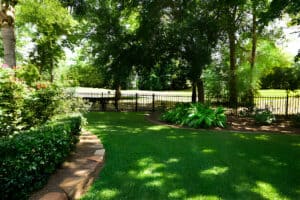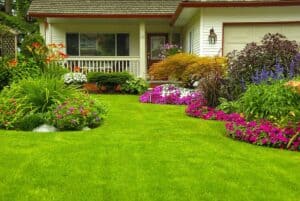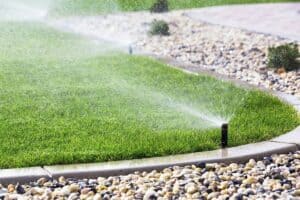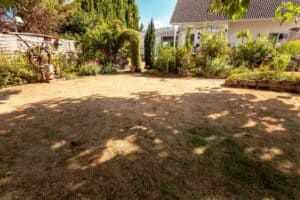You might not realize it, but every once in a while, your lawn needs to be aired out. Over time, your grass becomes compacted, especially grass that grows in soil with a high clay content or in high traffic areas. As a result, oxygen has difficulty making it down to the roots, which can make your lawn look less than appealing.
What is Aeration?
Technically speaking aeration is the naturally occurring process of air exchange between soil and its surrounding atmosphere. Practically speaking, aeration is the process of mechanically removing small plugs of thatch and soil from the lawn to improve natural soil aeration. It’s commonly called “core aeration” in the lawn service industry, and you may have heard of it as soil cultivation (coring, spiking, and slicing). Most homeowners simply call it aeration.
How Do I Know if my Lawn Needs Aeration?
To see if your lawn needs to be aerated, dig a one-square-foot section of grass about six inches deep and take a look at the grass roots. If they don’t extend further than two inches deep into the soil, your lawn is a good candidate for aeration.
Aeration Benefits:
Core aeration can help make your lawn healthier and reduce its maintenance requirements due to:
- Improved air exchange between the soil and atmosphere
- Enhanced soil water uptake
- Improved fertilizer uptake
- Reduced water runoff and puddling
- Stronger turf grass roots
- Reduced soil compaction
- Enhanced heat and drought stress tolerance
- Improved resiliency and cushioning
- Enhanced thatch breakdown
What Can You Expect When You Aerate?
Immediately after aeration, your lawn will be dotted with small plugs of grass and dirt pulled from the 
About 7 to 10 days after aeration, the holes will be filled with white, actively growing roots – a sign that the turfgrass is receiving additional oxygen, moisture and nutrients from the soil.
On compacted soils and on lawns with slopes, you should see an immediate difference in water puddling and runoff after irrigation or rainfall. After aeration, your lawn should be able to go longer between waterings, without showing signs of wilt. With repeat aeration over time, your lawn will show enhanced heat and drought stress tolerance.
Remember most lawns benefit from annual aeration. And while you shouldn’t expect miracles, especially with poor soil, lawns that receive this care will be healthier, more vigorous, easier to maintain and have fewer pest problems.
If you are looking for the most efficient way to restore your grass to full health, then it’s time to rely on Little Rock Lawn’s 17 years of experience. Contact us now for a free lawn consultation!





